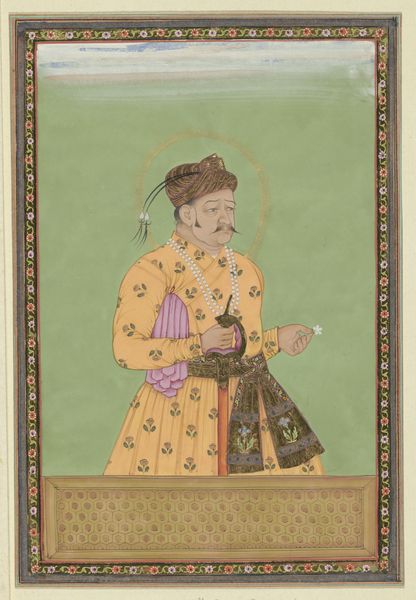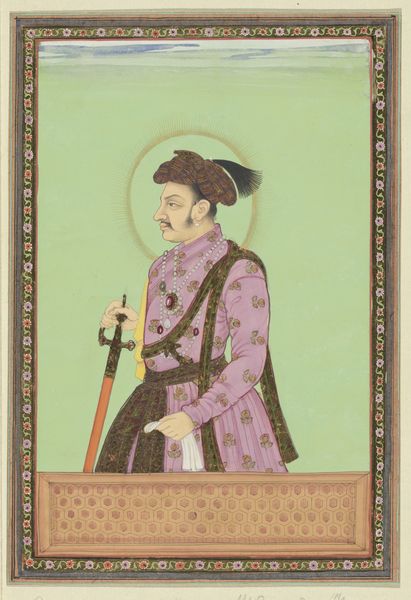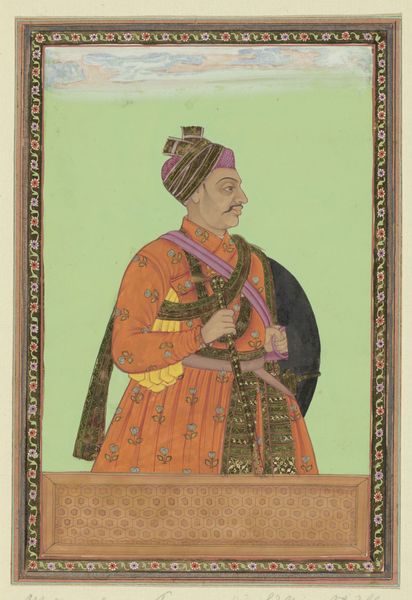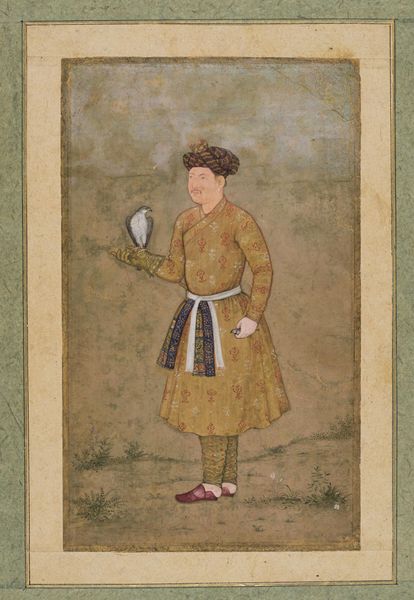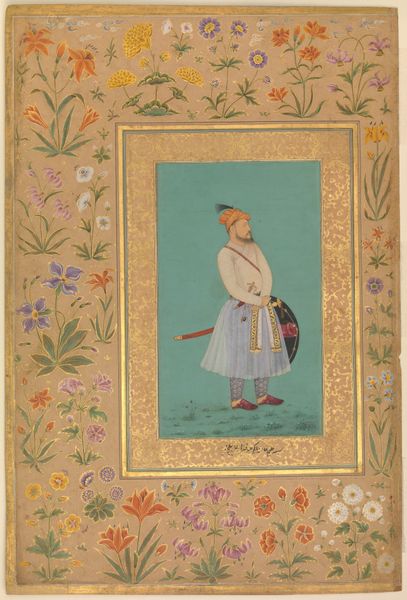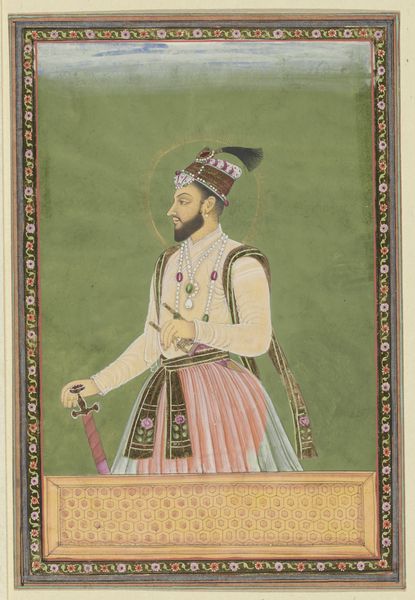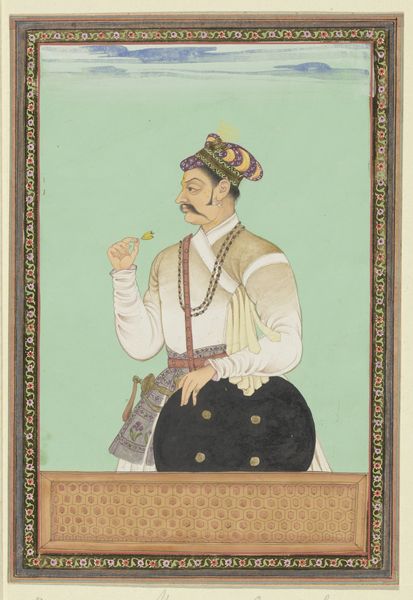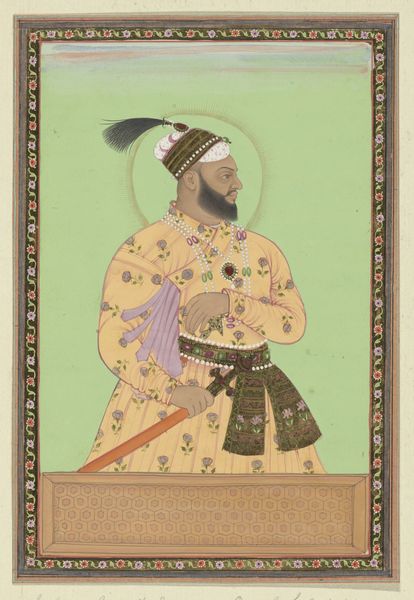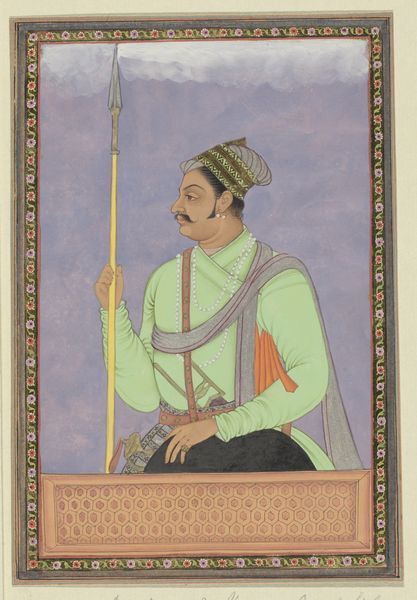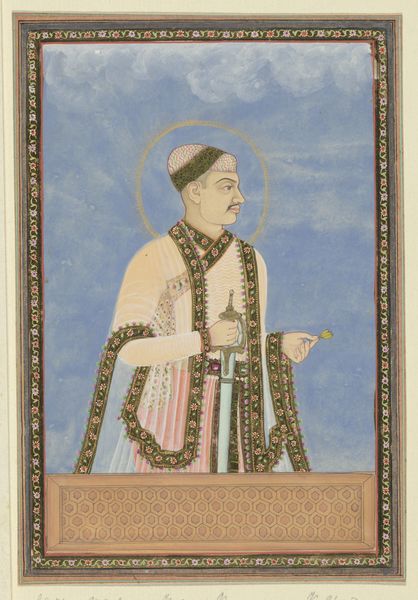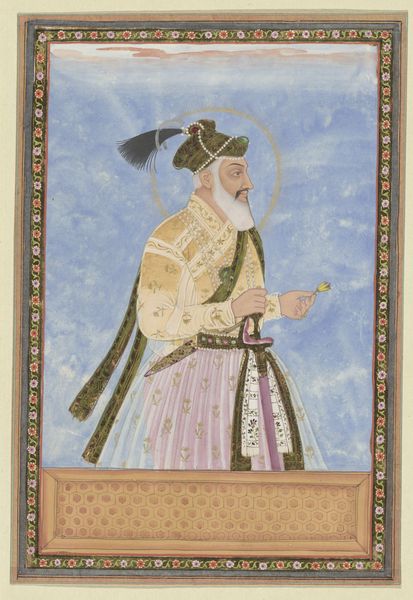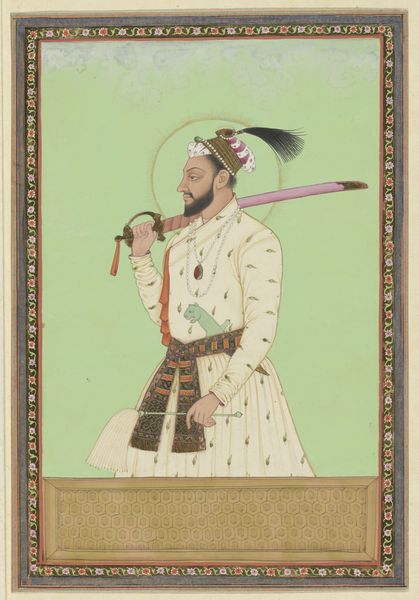
painting, paper, watercolor
#
portrait
#
water colours
#
painting
#
asian-art
#
paper
#
watercolor
#
islamic-art
#
miniature
#
watercolor
Dimensions: Image: 26.6 × 16.6 cm (10 1/2 × 6 1/2 in.); Outermost border: 30.5 × 20.2 cm (12 × 8 in.); Paper: 31.1 × 20.8 cm (12 1/4 × 8 5/8 in.)
Copyright: Public Domain
Curator: Looking at this, the colors are almost dreamlike, soft and ethereal. Like peering into a faded memory. Editor: That’s an interesting observation. We are looking at an artwork identified as “Portrait of Emperor Jahangir,” created around 1800, done in the Mughal style, utilizing watercolor on paper. It's currently housed right here at the Art Institute of Chicago. The use of watercolours provides soft shades of green to almost amplify his figure. Curator: Mughal! That explains the incredibly detailed patterns. I’m captivated by the orb he’s holding – the precision is stunning! Is it meant to symbolize something specific? And those almost translucent pink pants! It adds such a gentle, unexpected touch. Editor: Yes, that's precisely why these miniature portraits are fascinating. Mughal rulers are of Turkic-Mongol descent; there is careful articulation of wealth through detailed ornamentation, fabrics, jewels and symbolic gestures such as the holding of a jeweled orb as a show of the Emperor’s dominion and status. It draws from the Persian artistic style, evident in the painting’s elaborate decorative features. The orb would communicate sovereignty. Jahangir was known for his patronage of the arts and intellectual curiosity. Curator: Sovereignty and also a hint of vulnerability. I find it touching actually. Even though he's presented as this powerful figure, there’s a slight pensiveness in his eyes, don't you think? Editor: It might be tempting to assume a certain vulnerability but Mughal portraiture like this had the central function to express ideals of kingship rather than to reveal individual emotion. In other words, although it is rendered like an actual portrait with close attention to individualized physical features it communicates power. How could this communicate subversion? The challenge in art history has always been around accessibility and questioning who has access. For marginalized peoples like the poor and enslaved, something like this communicated extreme division. It is why these images remain both attractive, but also carry violence in many instances. Curator: Well, there’s a lot to consider. Beauty doesn’t always absolve. I’m definitely going to sit with this a bit longer today. What are your parting thoughts? Editor: This portrait is not simply a likeness but a complex symbol of power and identity, intricately tied to its cultural and historical context.
Comments
No comments
Be the first to comment and join the conversation on the ultimate creative platform.
